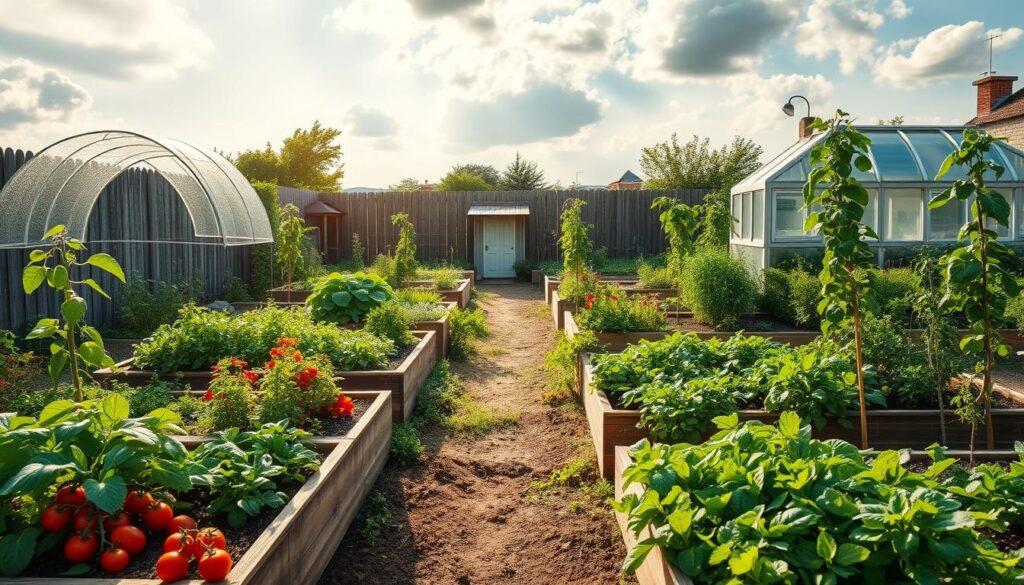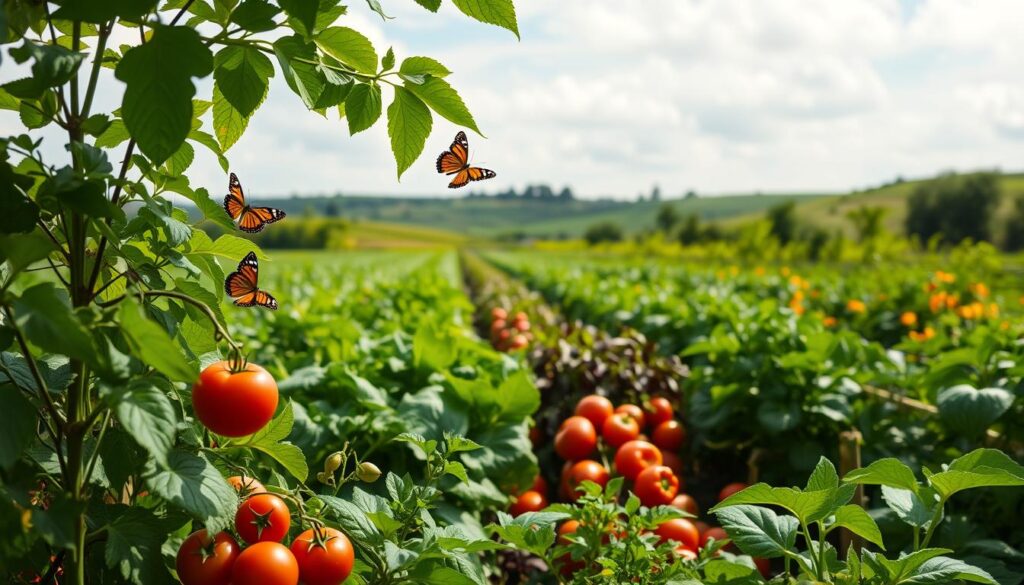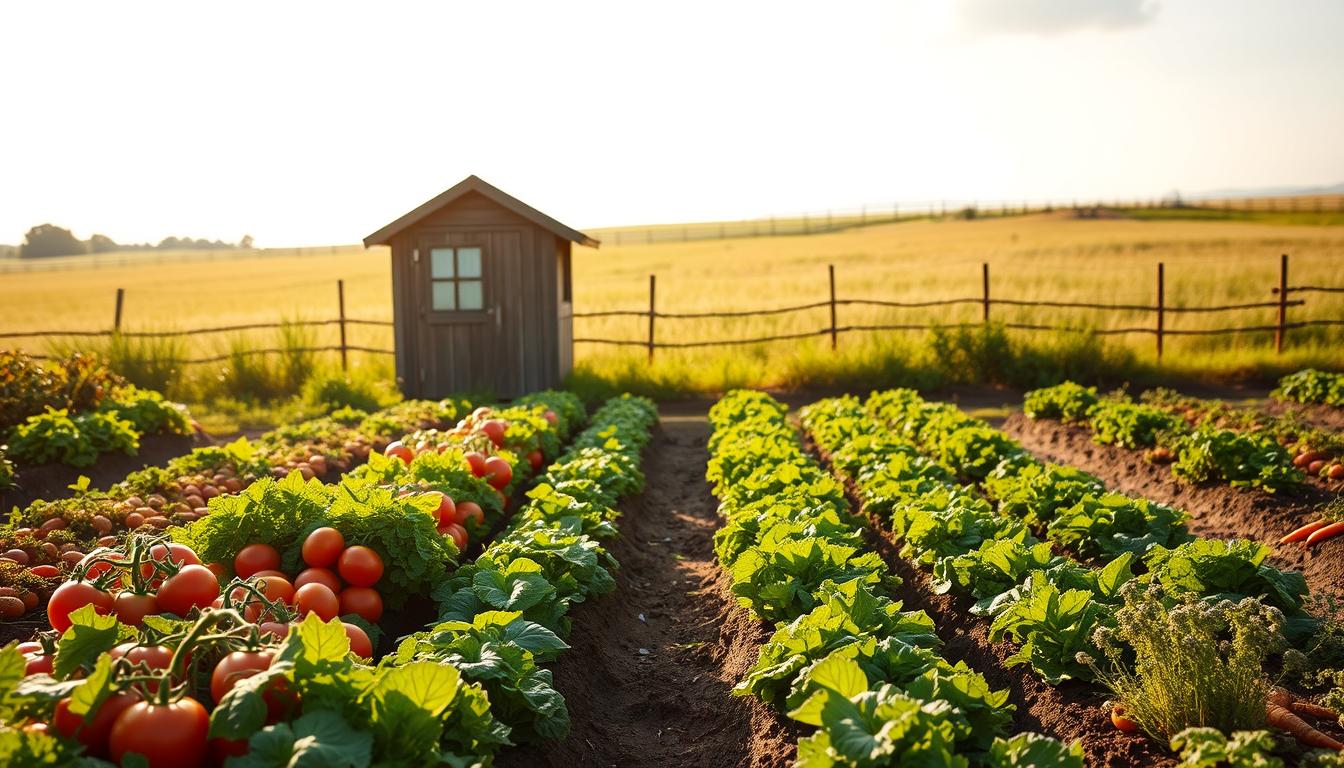Winter is the perfect time to start planning for the next growing season. While the ground may be frozen, your creativity doesn’t have to be. Designing your space can be a fun and rewarding activity for the whole family.
To make the process easier, Azure Farm and Axe & Root Homestead offer free downloadable templates. These include structured layouts for an 8×4 bed and artistic designs that kids will love. Starting small with one bed focused on your favorite crops is a great way to begin.
Winter is also the ideal time to order seeds. Trusted suppliers like Bakers Creek Heirloom Seeds have a wide variety of options. Popular choices include Brandywine tomatoes, bullnose peppers, and marigolds.
Once your design is complete, share your results on social media and tag @azurefarm and @axeandroothomestead. They’d love to see your creations!
Key Takeaways
- Winter is the best time to plan for the next growing season.
- Free templates from Azure Farm and Axe & Root Homestead make planning easy.
- Start small with one bed focused on family-favorite crops.
- Order seeds early from trusted suppliers like Bakers Creek Heirloom Seeds.
- Share your results on social media and tag the creators.
Why You Need a Vegetable Garden Plan Template
Starting with a structured approach ensures your plants thrive. Overcrowding and improper spacing are common mistakes that can hinder growth. A well-designed layout maximizes harvest potential and keeps your space organized.
According to the Almanac Garden Planner, 80% of successful gardeners use planning tools. These tools help track crop rotation over multiple years, ensuring soil health and preventing pest buildup. Templates also save time by providing pre-structured layouts for 10×10, 20×20, and raised bed designs.

Using a template can lead to significant cost savings. By optimizing seed purchases and reducing waste, you’ll get the most out of your investment. For example, one bed can yield salsa ingredients, pesto herbs, and pizza toppings—all in one season!
Territorial Seed Company offers a free catalog that’s a great resource for garden planning. Additionally, laminated templates can become reusable heirlooms, passed down through generations. This makes them a practical and sentimental tool for any gardener.
| Benefit | Description |
|---|---|
| Prevents Overcrowding | Ensures proper spacing for optimal growth. |
| Maximizes Harvest | Organized layouts lead to higher yields. |
| Saves Time | Pre-structured designs simplify the process. |
| Cost-Effective | Reduces waste and optimizes seed purchases. |
For more tips on creating an efficient layout, check out New Gen Living. Their resources can help you take your garden planning to the next level.
Getting Started with Your Garden Plan
Laying the groundwork for a thriving space begins with thoughtful preparation. Whether you’re a beginner or a seasoned enthusiast, understanding the basics will set you up for success. Let’s dive into the essential steps to create a flourishing area for your plants.
Choosing the Right Space for Your Garden
Selecting the ideal spot is crucial for healthy growth. Most fruiting plants require at least six hours of sunlight daily. Observe your area throughout the day to identify the sunniest spots.
Soil quality plays a significant role in plant success. According to Azure Farm, 60% of plant health depends on soil conditions. Test your soil and amend it with compost or leaf mold to improve fertility. A well-prepared bed ensures strong roots and abundant yields.

Maximize your space by using vertical structures for climbers like beans or cucumbers. This approach not only saves room but also adds visual interest to your area.
Deciding Between Seeds and Seedlings
Choosing between seeds and seedlings depends on your goals and experience. Seeds are cost-effective, with packets starting at $0.50, but require patience. Seedlings, priced between $3 and $5 per plant, offer instant gratification and are ideal for beginners.
Bakers Creek Heirloom Seeds boasts a 98% germination rate, making them a reliable choice for seed enthusiasts. For pest-resistant options, local nurseries provide high-quality seedlings ready for planting.
“Starting with 70% seedlings is a great way for beginners to see quick results while learning the ropes.”
Companion planting can also enhance your space. For example, marigolds deter nematodes when planted near tomatoes, creating a healthier environment for your plants.
| Option | Pros | Cons |
|---|---|---|
| Seeds | Cost-effective, wide variety | Requires time and patience |
| Seedlings | Instant results, pest-resistant | Higher initial cost |
By carefully selecting your space and planting method, you’ll create a thriving area that rewards you with a bountiful harvest. Happy gardening!
Creating Your Vegetable Garden Plan
Designing a productive outdoor space starts with a clear strategy. A well-organized layout ensures your plants thrive and maximizes your harvest potential. Whether you’re a beginner or an experienced enthusiast, these tips will help you create a functional and beautiful area.

Using a Free Vegetable Garden Plan Template
Free templates are a game-changer for organizing your space. The Almanac Garden Planner offers over 800 layout options, making it easy to plan garden designs for any size. Square Foot Gardening (SFG) can increase yield by up to 300%, making it a popular choice for small spaces.
Here’s how to make the most of a template:
- Numbered plant positions help you track where to place each crop.
- Laminate watercolor templates for dry-erase planning and reuse.
- Use the notes section to schedule succession planting for continuous harvests.
For raised beds, keep the width to 4 feet for easy access from both sides. This ensures you can tend to your plants without stepping on the soil.
Incorporating Companion Planting
Companion planting is a natural way to boost plant health and deter pests. For example, basil planted near tomatoes enhances flavor and repels insects. Nasturtiums paired with squash act as a trap crop for aphids.
Other effective combinations include:
- Garlic near roses to deter pests.
- Mint with cabbage to repel cabbage moths.
- The “Three Sisters” method: corn, beans, and squash grown together for mutual benefits.
“Companion planting creates a harmonious environment where plants support each other’s growth.”
By integrating these techniques, you’ll create a thriving space that’s both productive and visually appealing. Happy planting!
Tips for Successful Garden Planning
Successful gardening begins with understanding your environment and making the most of your space. By focusing on your hardiness zone and utilizing raised beds, you can create a thriving area that yields impressive results year after year.
Understanding Your Hardiness Zone
Your hardiness zone is a key factor in determining which plants will thrive in your area. The USDA divides the U.S. into 13 zones based on average minimum winter temperatures. Knowing your zone helps you choose crops that are well-suited to your climate.
For example, if you live in Zone 6, you’ll want to plant cold-hardy crops like kale and spinach in early spring. Warmer zones, like Zone 9, are ideal for heat-loving plants such as tomatoes and peppers. An interactive USDA zone map can help you quickly identify your zone and plan accordingly.

Zone-specific planting calendars are another valuable tool. They provide optimal planting dates for spring and fall crops, ensuring your plants have the best chance to flourish. By aligning your gardening schedule with your zone, you’ll save time and effort while maximizing your harvest.
Maximizing Space with Raised Beds
Raised beds are a game-changer for gardeners looking to make the most of their space. They warm up 3-4 weeks earlier than ground soil, extending your growing season. This is especially beneficial for early spring planting.
When building raised beds, consider the materials. Cedar is a popular choice due to its durability and natural resistance to rot. Composite materials are another option, offering a longer lifespan but at a higher cost. Aim for a soil depth of at least 12 inches for root crops like carrots, while 6 inches is sufficient for lettuce and herbs.
Here are some additional benefits of raised beds:
- Improved soil drainage and aeration.
- Easier access for planting and maintenance.
- Reduced weed growth and soil compaction.
Raised beds also provide opportunities for family involvement. Assign kids tasks like making seed tapes or building scarecrows. These activities make gardening fun and educational for the whole family.
For year-round gardening, consider adding cold frames to your raised beds. They allow you to grow winter greens like spinach and kale, even in colder climates. With proper planning, your raised beds can produce fresh, homegrown produce throughout the year.
Conclusion
Crafting a thriving outdoor space starts with the right tools and mindset. Using a structured approach can reduce stress and increase your yield. According to Azure Farm, 92% of template users report higher satisfaction with their results.
Take advantage of free resources like planting guides and zone charts to optimize your space. Share your progress on social media using #GardenTemplateChallenge to inspire others. Don’t forget to order seeds early for the best selection and variety.
Looking ahead, seasonal guides on canning and pest control will help you maintain a year-round gardening mindset. Plan successive plantings to keep your area productive and enjoyable for the whole family.
Download both practical and creative templates to get started. Happy gardening!
For more tips on starting your journey, check out this beginner’s guide.

